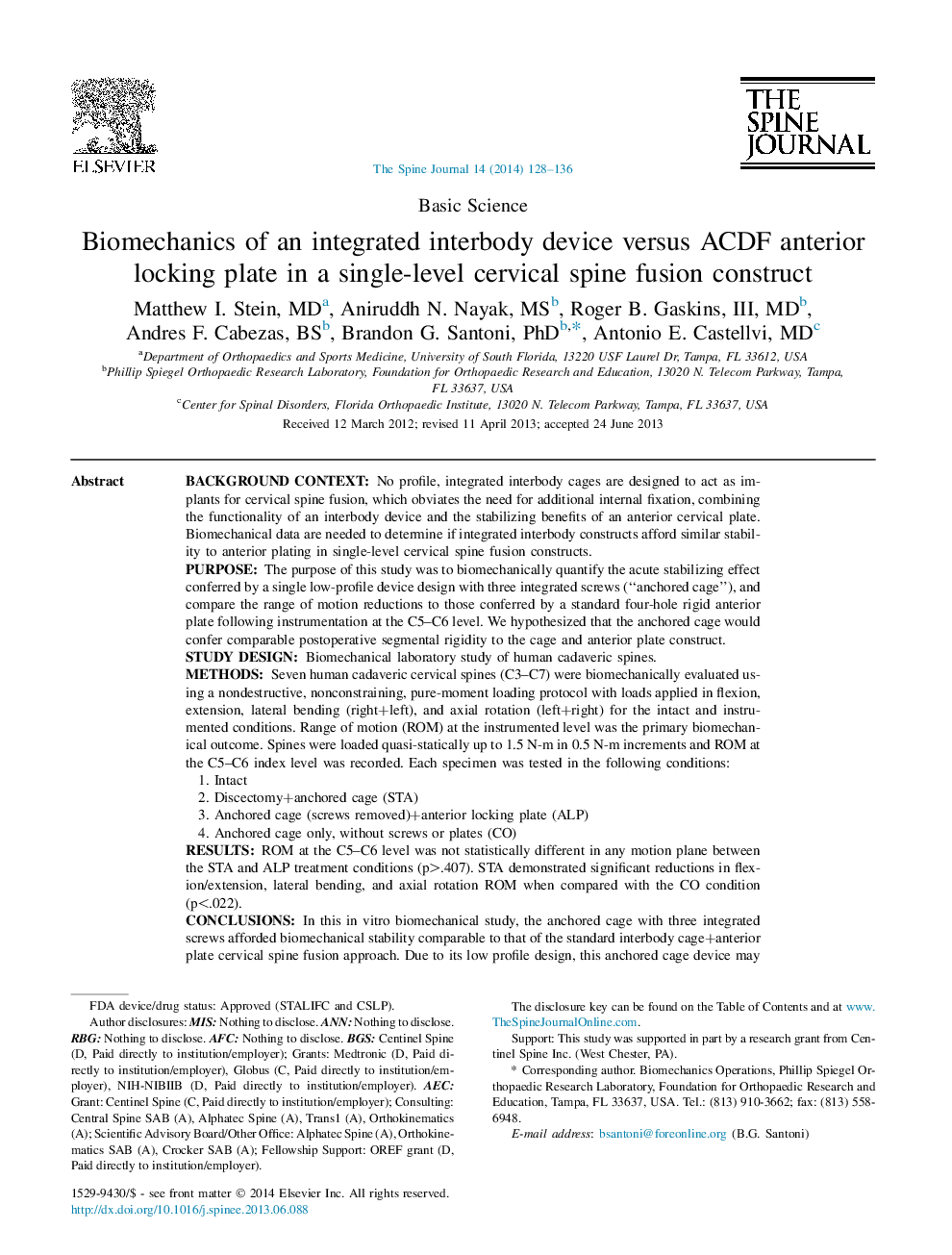| کد مقاله | کد نشریه | سال انتشار | مقاله انگلیسی | نسخه تمام متن |
|---|---|---|---|---|
| 6212615 | 1268584 | 2014 | 9 صفحه PDF | دانلود رایگان |

Background contextNo profile, integrated interbody cages are designed to act as implants for cervical spine fusion, which obviates the need for additional internal fixation, combining the functionality of an interbody device and the stabilizing benefits of an anterior cervical plate. Biomechanical data are needed to determine if integrated interbody constructs afford similar stability to anterior plating in single-level cervical spine fusion constructs.PurposeThe purpose of this study was to biomechanically quantify the acute stabilizing effect conferred by a single low-profile device design with three integrated screws (“anchored cage”), and compare the range of motion reductions to those conferred by a standard four-hole rigid anterior plate following instrumentation at the C5-C6 level. We hypothesized that the anchored cage would confer comparable postoperative segmental rigidity to the cage and anterior plate construct.Study designBiomechanical laboratory study of human cadaveric spines.MethodsSeven human cadaveric cervical spines (C3-C7) were biomechanically evaluated using a nondestructive, nonconstraining, pure-moment loading protocol with loads applied in flexion, extension, lateral bending (right+left), and axial rotation (left+right) for the intact and instrumented conditions. Range of motion (ROM) at the instrumented level was the primary biomechanical outcome. Spines were loaded quasi-statically up to 1.5 N-m in 0.5 N-m increments and ROM at the C5-C6 index level was recorded. Each specimen was tested in the following conditions:1. Intact2. Discectomy+anchored cage (STA)3. Anchored cage (screws removed)+anterior locking plate (ALP)4. Anchored cage only, without screws or plates (CO)ResultsROM at the C5-C6 level was not statistically different in any motion plane between the STA and ALP treatment conditions (p>.407). STA demonstrated significant reductions in flexion/extension, lateral bending, and axial rotation ROM when compared with the CO condition (p<.022).ConclusionsIn this in vitro biomechanical study, the anchored cage with three integrated screws afforded biomechanical stability comparable to that of the standard interbody cage+anterior plate cervical spine fusion approach. Due to its low profile design, this anchored cage device may avoid morbidities associated with standard anterior plating, such as dysphagia.
Journal: The Spine Journal - Volume 14, Issue 1, 1 January 2014, Pages 128-136